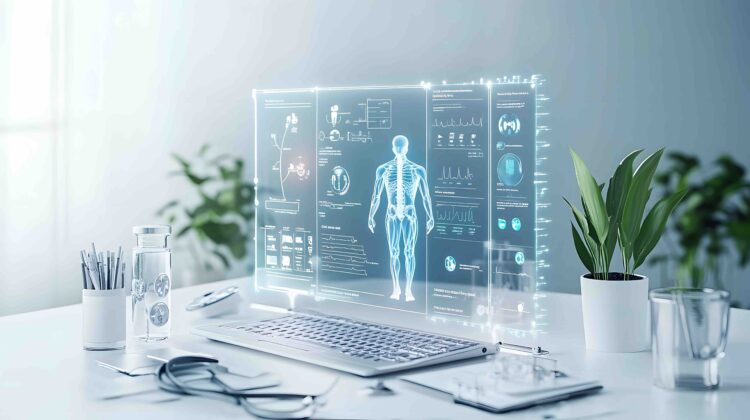Around the world, low-income and resource-constrained regions face a mix of overwhelming health challenges: limited infrastructure, shortage of trained staff, weak supply chains, geographic isolation, and underfunding. Yet in recent years, technology has begun to offer powerful tools to address those issues. From drones flying medicines across rough terrain to AI models helping community health workers diagnose illness, health tech is quietly but significantly transforming lives. Below is a look at key innovations, concrete examples, the possibilities they open, the risks, and what it will take to scale them effectively.
Key Innovations & Real-World Examples
- Drone Delivery for Medical SuppliesIn countries like Rwanda, drones are being used to deliver blood, vaccines, and other essential medical materials to remote clinics. This dramatically reduces transit time and spoilage, compared to difficult road journeys. For example, Zipline’s operations have reduced blood delivery time median from over two hours by road to around 41 minutes by air for many rural health facilities.
- Remote Diagnostic Tools & AI
- AI-powered scanning of chest X-rays is being used in places like Lesotho to speed up tuberculosis detection, as well as to flag other conditions such as heart failure or early cancer signs.
- Systems like Ilara Health (Kenya) use AI to diagnose respiratory illnesses from cough sounds.
- The Matibabu project in Uganda has developed a rapid malaria test that aims for point-of-care diagnosis in rural clinics, improving early detection and reducing reliance on syndromic treatment.
- Telemedicine & Mobile Health (mHealth)Remote consultations, virtual follow-ups, and health chatbots are making expert healthcare accessible to places without local specialists. For instance:
- PIH (Partners In Health) uses mobile health apps and chatbots in several countries to maintain care even in remote or underserved locations.
- Projects like Afya-Tek in Tanzania integrate mobile tools, biometric IDs, and AI analytics to link community health volunteers with clinics and pharmacies.
- Digital Records, Health Information Systems & Data PlatformsBetter data is central to good decision-making.
- DHIS2 is a platform used in over 70 low- and middle-income countries as a health management information system to collect, analyze, and report key health metrics.
- Systems like OpenMRS are used by PIH in multiple countries to digitize medical records, reducing loss, misinterpretation, and inefficiencies.
- Health Financing & Supply Chain InnovationsAccess to medicine and ability to pay are huge barriers.
- Zipline again is not just about delivery but enabling reliable supply of medicines and vaccines.
- Shelf Life in Nigeria is an example of a tech-backed inventory management & financing service for community pharmacies. It helps such pharmacies keep a more diverse, genuine stock by easing financing and operations.
- Mobile wallets or health saving/wallet platforms (e.g., mTIBA in Kenya) allow users to earmark, save, spend funds for health services in more transparent, accessible ways.
- Low-Tech / Appropriate Tech SolutionsSome of the most effective healthcare innovations are low-cost, locally appropriate.
- The MicroConsignment Model allows local entrepreneurs (often women) to distribute health-related products (e.g. water filters, reading glasses, malaria tests) into remote villages, building both access and income.
- Platforms using satellite connectivity to link remote health facilities or floating hospitals (e.g. Satmed) help deliver consultations, remote learning, and medical imaging where terrestrial internet is unreliable.
Opportunities & Why This Matters
- Saving Lives, Faster: Early diagnosis, faster delivery of medicines, and reaching remote areas reduce mortality from common causes like infectious disease, complications in pregnancy, and emergencies.
- Efficiency & Cost Reduction: Digitization, predictive analytics, and streamlined supply chains help reduce waste (e.g. reducing spoilage of medicines or blood), lower logistical costs, and improve allocation of resources.
- Empowerment & Equity: Many innovations enable community health workers to deliver better care, give patients more control over their health data, and increase dignity by bringing care closer to people’s homes.
- Resilience for Future Crises: Health systems built around flexible technology (telehealth, mobile diagnostics, drone delivery) are more resilient in times of crisis (e.g. pandemics, natural disasters) when traditional infrastructure may be disrupted.
Challenges & Risks
- Infrastructure Gaps: Many remote areas lack reliable electricity, internet / connectivity, cold chain (for vaccines), or roads. Without solving these basic challenges, even great tech tools cannot reach full potential.
- Cost, Maintenance, Sustainability: Initial pilot programs often are funded by grants or NGOs; but scaling, maintaining devices, paying for data costs, batteries, repairs, etc., is harder.
- Data Privacy, Trust & Regulation: Medical data is sensitive. Ensuring privacy, secure storage, transparent consent, ethical use of AI models is essential. Weak regulatory frameworks in many low-income countries can be a barrier or a risk.
- Human Capacity & Training: Technology is only useful if people (health workers, community members) are trained to use it. Literacy (both digital and general) matters. Also, health workers are often overburdened; adding tech tools can create work-load issues unless well designed.
- Equity & Access: There is a risk that tech innovations benefit better-off communities first, leaving the poorest still excluded. Affordability and local appropriateness must be considered.
- Interoperability & Fragmentation: If many different platforms are used without standards, data silos emerge. This makes it hard to share data across systems or aggregate insights at regional or national levels.
What It Will Take to Scale Impact
To ensure that the global health-tech revolution truly improves healthcare in low-income regions in a sustained, equitable way, several factors are needed:
- Strong local leadership and partnerships
Solutions built with local input, aligned with local needs, and involving community health workers, local governments, NGOs, and patients are more likely to succeed and scale. - Sustainable financing models
Beyond grants, models that incorporate government budgets, insurance schemes, public-private partnerships, social enterprises, and perhaps sliding scales for fees can help maintain services long term. - Regulatory frameworks and policy support
Governments must set and enforce standards for data privacy, device safety, AI ethics, medical licensing, telehealth, supply chain integrity. - Investment in infrastructure
Electricity, connectivity, roads, and reliable logistics remain foundational. Even the best drones or diagnostic tools need supply lines, power, and coordination. - Training, capacity building, and human-centered design
Technologies must be usable by people in real conditions. That means tech with offline capabilities, interfaces that work in local languages, training and support for health workers, and tools designed for resilient rural contexts. - Rigorous evaluation & monitoring
Knowing what works, what doesn’t, and under what conditions is vital. This means collecting outcome data, doing randomized evaluations or at least good observational studies, and sharing lessons widely so innovations can be improved and scaled.
The health tech revolution in low-income regions is more than just a promise it is already delivering real, measurable benefits. From drone-enabled delivery of lifesaving supplies in Rwanda, to AI diagnosing disease, to mobile health wallets helping people pay for necessary care, technology is lowering barriers and bringing care to places it could not reach before.
The path forward is not without hurdles. But with smart design, investment, local collaboration, and a commitment to equity, these innovations can reshape what global health looks like. If done well, health tech could help accelerate progress toward universal health coverage, reduce preventable deaths, and ensure that people everywhere not just in cities or rich nations get the care they need.
Read more on Tech Gist Africa:
How Technology is Advancing Global Food Security and Reducing Hunger
Tech Innovations in Global Migration and Refugee Support Systems
The Role of Artificial Intelligence in Accelerating Climate Change Solutions










